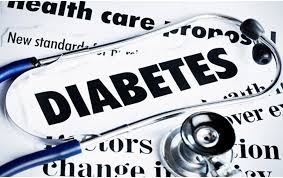The Impact of Hyperbaric Medicine on COVID-19 Patients

Off late, a couple of articles leading to the application of hyperbaric oxygen therapy (HBOT) for COVID-19 patients were published.
Interestingly, the findings usher a new line of hope to mitigate the symptoms of the virus.
Reportedly, the first article mentions a patient whose standard respiratory support failed to respond after being infected by COVID-19. Following the application of HBOT to the tune of eight successful sessions, (at 200 kPa/95 minutes) the patient showed marked improvement.
In the second case, the condition was way more severe as the patient was put on a ventilator system due to Acute Respiratory Distress Syndrome (ARDS). A total of five HBOT sessions were administered for his recovery.
Further, it was also mentioned that the attending medical professionals were able to treat more than 25 such patients with three to four sessions of HBOT. Soon after, they were all discharged from the hospital.
It was also stated that a steady administering of three to eight doses in total was successful to pull patients away from the infection’s hypoxemic crisis phase. As such, the hospital could discharge them faster. Thus, it was concluded that the application of HBOT during the early stages of the infection cold prevent severe damage and bring down the mortality rate of COVID-19 cases.
In this post, we take a look at the impact of HBOT on COVID-19 patients and how medicos are looking to make use of it to improve the situation.
How Does HBOT Work Against COVID?
HBOT is a preferred form of treatment that is used by leading medical practitioners and institutions globally to treat cases of extreme wounds, infection, and inflammation.
Working on the same line, doctors attending to suffering patients are hopeful that a similar kind of effect will be functional to treat the commonly occurring symptoms of COVID19.
By all means, HBOT is expected to lower intensive care admissions, the chance of multi-organ failure, and lower the overall mortality rate for COVID-19.
Reportedly, the Department of Physiology and Pharmacology at the Karolinska Institute has already sampled more than 300 cases of COVID-19 patients by subjecting them to HBOT treatment in their effort to evaluate the effect of the therapy.
As HBOT is all about working with pure, unadulterated oxygen inside a pressurized chamber, the method has been successful in treating decompression sickness for deep-sea divers and associated issues. Thus, the risk levels associated with HBOT are comparatively low when pitted against other forms of treatments.
It is to be noted that the underlying mechanisms of HBOT are yet to be fully understood and appreciated. However, researchers are confident about its capability to largely suppress the recurrent symptoms of COVID-19 and help boost the immune system that takes a bad hit, rendering the person to be weak and bedridden.
What has been working in favor is HBOT is its capability to deter from negatively affecting the immune system; the only thing that can combat the virus naturally. Hence, quite a few numbers of HBOT sessions are deemed sufficient to help with the falling oxygen level. In the majority of COVID-19 cases, doctors are left with no option but to put the patient in ventilation chambers to fight the shortage of oxygen.
In the majority of cases where patients are being treated for COVID-19 pneumonia or hypoxemia, the treatment has its ground in Henry’s Law and sound physiology.
Henry’s Law as most of us are aware serves the basis for the exchange of gases across the lungs. According to the law, the concentration of the liquid for any gas interfacing remains proportional to the pressure. The final uptake of the oxygen binds it to the hemoglobin right within the pulmonary capillary of red blood cells, which in turn is dependent on the oxygen that is dissolved from the pulmonary wall.
Any sort of interference at such a crucial juncture leads to decreased oxygen-hemoglobin binding.
In a person affected with COVID-19, there seems to be a barrier for the diffusion in the alveoli as well as in the interstitium. With situations like hypoxemia or pneumonitis, any standard form of treatment fails to penetrate the diffusion, due to the ambient pressure. Besides, it also fails to treat oxygen debt that leads to an intense form of systemic and pulmonary inflammatory reactions.
Thus, one is left with two options; either bypass the lungs using Extra Corporeal Membrane Oxygenation (ECMO), or dissolute oxygen across tissues by using HBOT that offers full chance to exploit Henry’s Law.
Do We Stand A Chance With HBOT?
The original findings that cited the significance of HBOT for treating COVID19 cases have called the treatment option to be successful.
Moreover, none of the attending medical professionals were diagnosed with COVID-19, as followed by intense control procedures to avoid infection. They strongly urge other medical practitioners to do the same when resorting to using HBOT to treat COVID-19 cases.
Conclusion
The first-hand evidence of HBOT treatment as mentioned in the findings report suggests the success rate for treating COVID-19 cases. It is only a matter of time before other medical facilities consider using HBOT as an effective line of treatment to combat the deadly virus.





